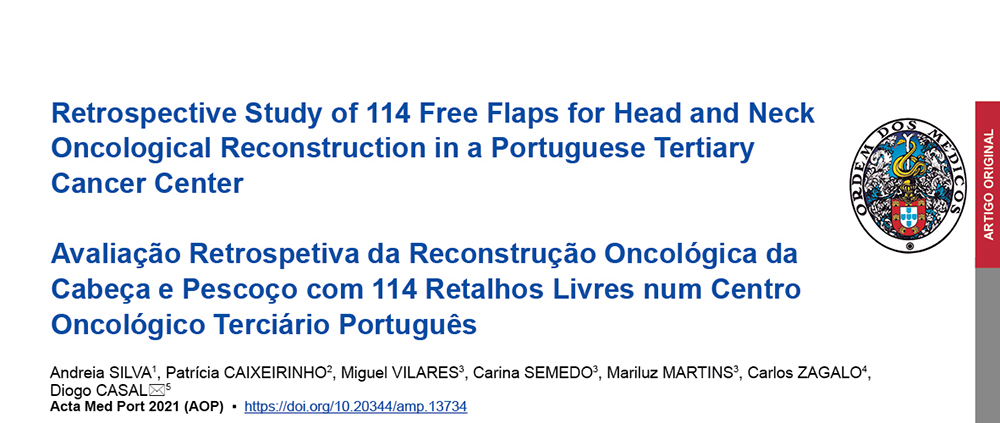SOCIAL MEDIA
Portuguese Medical Association's Scientific Journal

Introduction: The Portuguese experience in microsurgical reconstruction of the head and neck after oncological surgery is scantly described. The primary aim of this study was to characterize the use of microvascular reconstruction after head and neck tumor resection in a Portuguese tertiary oncological center
Material and Methods: The authors retrospectively evaluated 114 microvascular free flap procedures performed for head and neck reconstruction after oncological resection in a department of Head and Neck Surgery of a Portuguese tertiary oncological center. Patients were operated on from January 2012 to May 2018. Data on patient demographic features, tumour characteristics, perioperative complications, postoperative aesthetic and functional results, survival time and time to recurrence were extracted.
Results: Most tumours mandating microsurgical reconstruction were mucosal squamous cell carcinomas (85%) and were located in the oral region (95.6%). Around 45% of the patients had a T4a tumour and 30% a T2 tumour. Cervical metastases were present in 45.6% of the cases. The radial forearm flap and the fibular flap were the most commonly used microsurgical reconstructive options (58% and 41%, respectively). More than 80% of patients had no post-operative complications. Partial necrosis of the flap occurred in 6.1% of patients, while total flap necrosis occurred in 3.5% of cases. Aesthetic and functional results were considered at least satisfactory in all patients in which the flaps survived.
Discussion: This study is by far the largest series of microsurgical head and neck reconstruction after oncological surgery reported by a single tertiary centre in Portugal. Survival and functional benefits are similar to those reported in other large oncological centres in the world.
Conclusion: Microvascular reconstruction seems like a reliable treatment option in head and neck oncological surgery at our institution.